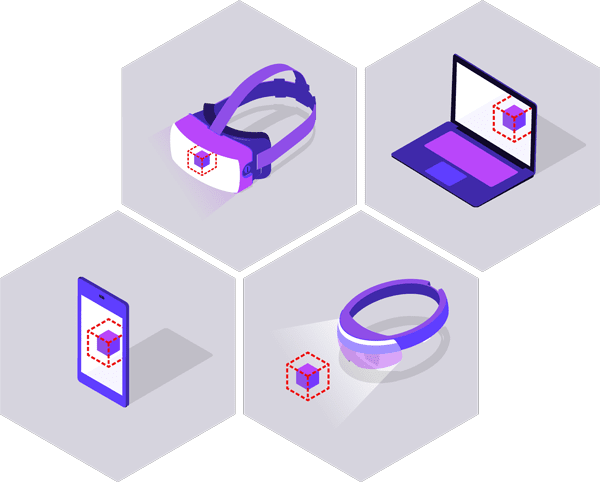Great companies rely on the great skills of great employees. So why not channel the knowledge of talented individuals into work based coaching programmes, to support colleagues’ professional development and boost your organisation’s skills base?

On the job coaching is a great way to develop staff and take a company’s productivity to the next level. Delivered on a 1-2-1 basis, coaching is designed to be tailored to an individual training and development needs. It differs from many training methods as it isn’t about the coach giving all the answers and providing a quick fix to a challenge. Coaching supports an employee to be accountable for their own learning and career development. Coaches ask questions and give guidance to help employees to learn new skills – or build on existing ones.
When successfully introduced, on the job training advantages include having a significant impact on both employees and an organisation. In addition to developing the skills base of the workforce, it can foster strong connections between colleagues, help employees to feel motivated and valued, as well as improving staff retention and overall productivity. But to reap the rewards that on the job coaching can bring, introducing a company-wide, positive and nurturing coaching culture is crucial.
9 tips to developing a workplace coaching culture
1. Don’t impose coaching onto your organisation; develop a programme with your employees from the start
Coaching isn’t always going to address all your training needs, so before introducing a coaching programme across the board, you need to make sure it’s right for you. Employees are the key to making coaching successful, but it can be met with suspicion. Involve them from the start to get their buy-in; from getting to know their strengths and motivations, as well as their individual training needs.
2. Set clear objectives
As with any training intervention, ensuring there are clear and measurable aims and objectives is essential. This should start with the big strategic picture; what are your organisation’s long-term goals? From this point, you can drill down into the team and individual work targets, identify skills gaps and set milestones to meet set objectives.
3. Lead by example
Being at the top of an organisation doesn’t mean there’s not plenty still to learn. Coaching can offer company leaders and senior managers a great way to hone strategic and leadership skills, spearheading improved company performance. Introducing coaching at the highest level will also show that leaders are leading by example, which will help to encourage employees’ buy-in.
4. Build trust
Coaching relies on open and honest relationship between the coach and coachee. But developing an effective coaching relationship with a colleague isn’t always easy; it takes work to build trust. Sharing potential gaps in knowledge can leave an employee feeling vulnerable; especially if they feel that this might be held against them in their future career progression. The coachee needs to be reassured that the process is confidential, and the coach needs to keep an open mind and remain non-judgemental to help to build trust over time.

5. Timing: Weave it into the working day
Great on the job coaching turns the concept of training on its head; it’s not a separate activity to every day work, it’s an integral part of it. Work schedules may need to be adjusted to accommodate a coaching programme, to ensure that the experience enhances rather than adds to existing work pressures.
6. Offer support
Coaching colleagues can offer existing employees a great chance to expand their own professional and personal development, in addition to supporting other’s work based training. If employees are coaching colleagues, they will need support. Formal coaching training could be worth considering, in addition to providing a clear framework and guidance, as well as more informal, ad hoc advice.
7. Feedback
Giving and receiving feedback is a key part of the coaching experience. but needs contributes, rather than compromise a positive experience. It can help to show what works and where progress is being made, as well as what doesn’t work so well and where coaching techniques need to change. Feedback needs to be given regularly and both coach and coachee should be open to constructive feedback from others, as well as each other.
8. Celebrate success
Coaching isn’t a quick fix to address gaps in knowledge and skills. Setting milestones can help to break down long term goals, and when achieved, these successes should be shared and celebrated with colleagues to boost morale and keep both coachee and coach motivated.

9. Innovate!
Immersive technologies may help coaching programmes to innovate. Platforms such as Future Visual’s VISIONxR™ that can replicate a workplace in a virtual environment can help to provide a collaborative and safe space to meet and work through challenges. These advances are particularly useful where the coaching is addressing technical or process-based tasks that would be high risk and potentially dangerous in the workplace. Virtual reality can also support coaching employees across multiple locations, allowing employees to meet and interact in a virtual space, without having to be in the same physical location.
On the job coaching: everyone’s a winner?
By celebrating success, mutual respect and learning, coaching is a brilliant way to motivate employees to reach their potential, encourage team collaboration and boost company growth. By fostering a coaching culture, companies can promote a sense of collective cohesion and shared goals that has far reaching benefits to individuals and organisation alike.
Find out more about how Future Visual can support you in your coaching journey, by contacting the team today www.futurevisual.com
Great companies rely on the great skills of great employees. So why not channel the knowledge of talented individuals into work based coaching programmes, to support colleagues’ professional development and boost your organisation’s skills base?

On the job coaching is a great way to develop staff and take a company’s productivity to the next level. Delivered on a 1-2-1 basis, coaching is designed to be tailored to an individual training and development needs. It differs from many training methods as it isn’t about the coach giving all the answers and providing a quick fix to a challenge. Coaching supports an employee to be accountable for their own learning and career development. Coaches ask questions and give guidance to help employees to learn new skills – or build on existing ones.
When successfully introduced, on the job training advantages include having a significant impact on both employees and an organisation. In addition to developing the skills base of the workforce, it can foster strong connections between colleagues, help employees to feel motivated and valued, as well as improving staff retention and overall productivity. But to reap the rewards that on the job coaching can bring, introducing a company-wide, positive and nurturing coaching culture is crucial.
9 tips to developing a workplace coaching culture
1. Don’t impose coaching onto your organisation; develop a programme with your employees from the start
Coaching isn’t always going to address all your training needs, so before introducing a coaching programme across the board, you need to make sure it’s right for you. Employees are the key to making coaching successful, but it can be met with suspicion. Involve them from the start to get their buy-in; from getting to know their strengths and motivations, as well as their individual training needs.
2. Set clear objectives
As with any training intervention, ensuring there are clear and measurable aims and objectives is essential. This should start with the big strategic picture; what are your organisation’s long-term goals? From this point, you can drill down into the team and individual work targets, identify skills gaps and set milestones to meet set objectives.
3. Lead by example
Being at the top of an organisation doesn’t mean there’s not plenty still to learn. Coaching can offer company leaders and senior managers a great way to hone strategic and leadership skills, spearheading improved company performance. Introducing coaching at the highest level will also show that leaders are leading by example, which will help to encourage employees’ buy-in.
4. Build trust
Coaching relies on open and honest relationship between the coach and coachee. But developing an effective coaching relationship with a colleague isn’t always easy; it takes work to build trust. Sharing potential gaps in knowledge can leave an employee feeling vulnerable; especially if they feel that this might be held against them in their future career progression. The coachee needs to be reassured that the process is confidential, and the coach needs to keep an open mind and remain non-judgemental to help to build trust over time.

5. Timing: Weave it into the working day
Great on the job coaching turns the concept of training on its head; it’s not a separate activity to every day work, it’s an integral part of it. Work schedules may need to be adjusted to accommodate a coaching programme, to ensure that the experience enhances rather than adds to existing work pressures.
6. Offer support
Coaching colleagues can offer existing employees a great chance to expand their own professional and personal development, in addition to supporting other’s work based training. If employees are coaching colleagues, they will need support. Formal coaching training could be worth considering, in addition to providing a clear framework and guidance, as well as more informal, ad hoc advice.
7. Feedback
Giving and receiving feedback is a key part of the coaching experience. but needs contributes, rather than compromise a positive experience. It can help to show what works and where progress is being made, as well as what doesn’t work so well and where coaching techniques need to change. Feedback needs to be given regularly and both coach and coachee should be open to constructive feedback from others, as well as each other.
8. Celebrate success
Coaching isn’t a quick fix to address gaps in knowledge and skills. Setting milestones can help to break down long term goals, and when achieved, these successes should be shared and celebrated with colleagues to boost morale and keep both coachee and coach motivated.

9. Innovate!
Immersive technologies may help coaching programmes to innovate. Platforms such as Future Visual’s VISIONxR™ that can replicate a workplace in a virtual environment can help to provide a collaborative and safe space to meet and work through challenges. These advances are particularly useful where the coaching is addressing technical or process-based tasks that would be high risk and potentially dangerous in the workplace. Virtual reality can also support coaching employees across multiple locations, allowing employees to meet and interact in a virtual space, without having to be in the same physical location.
On the job coaching: everyone’s a winner?
By celebrating success, mutual respect and learning, coaching is a brilliant way to motivate employees to reach their potential, encourage team collaboration and boost company growth. By fostering a coaching culture, companies can promote a sense of collective cohesion and shared goals that has far reaching benefits to individuals and organisation alike.
Find out more about how Future Visual can support you in your coaching journey, by contacting the team today www.futurevisual.com































